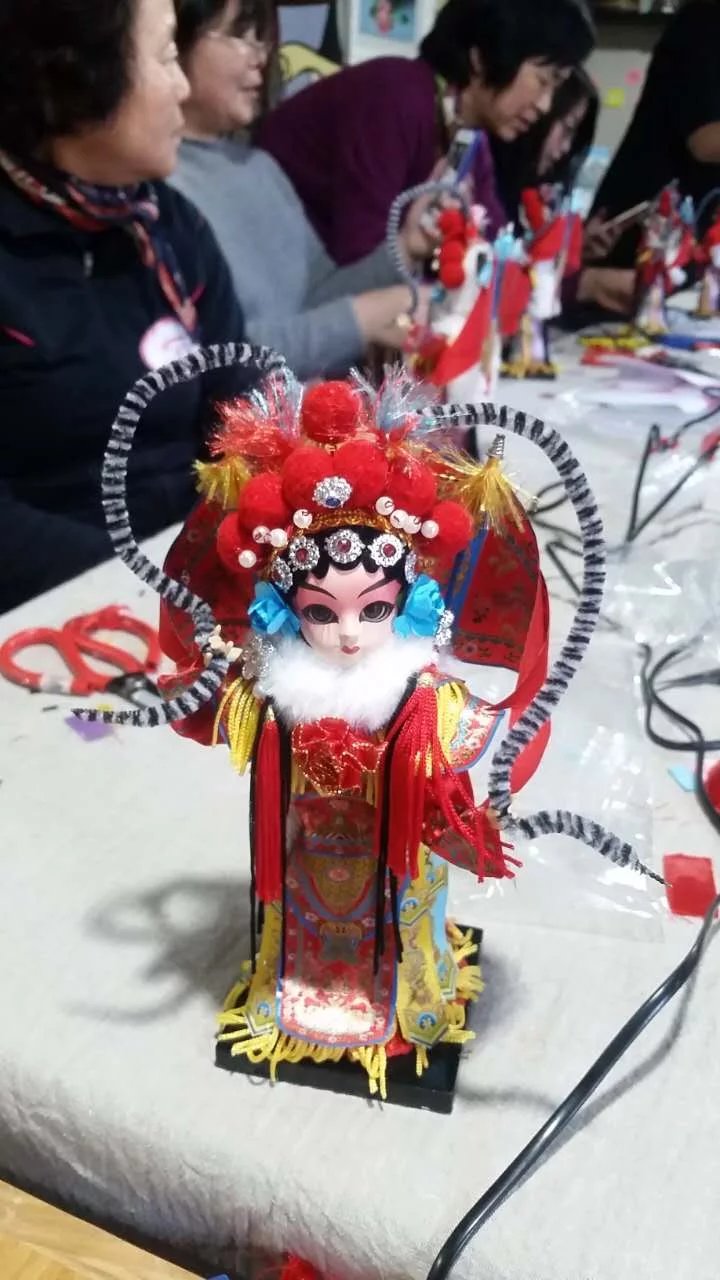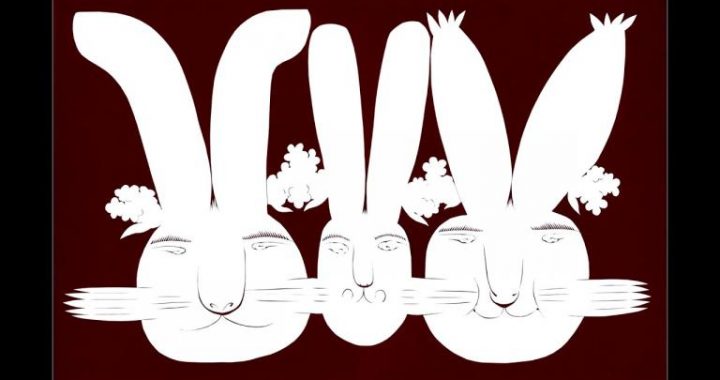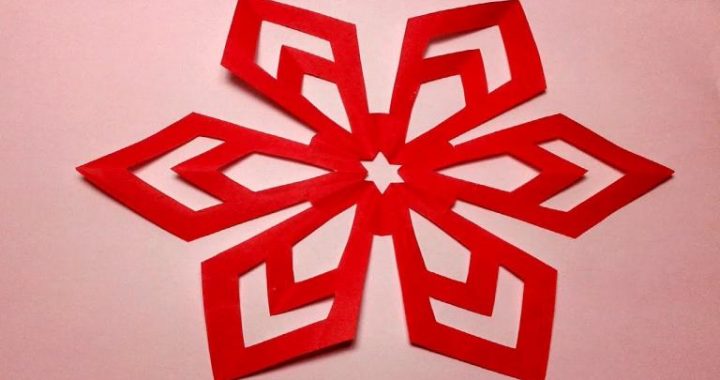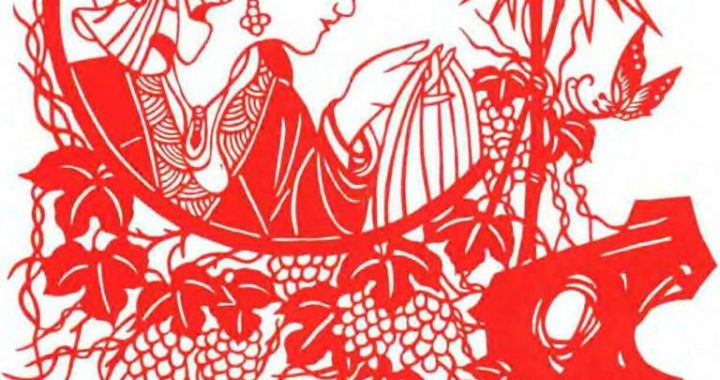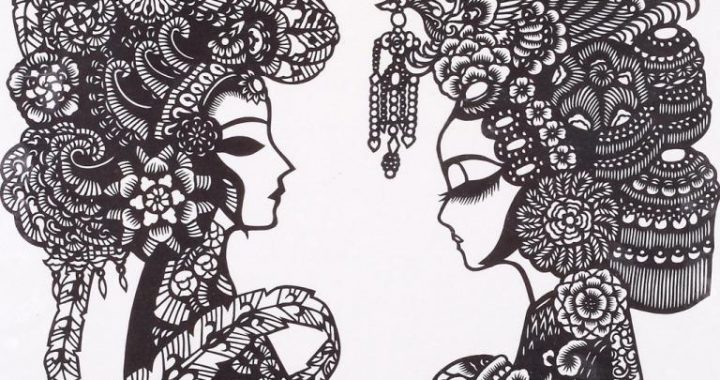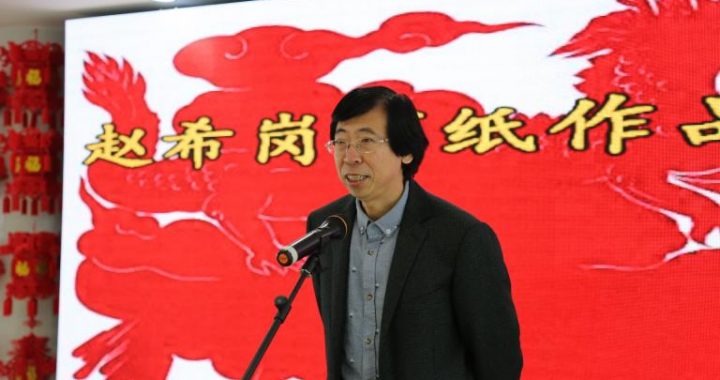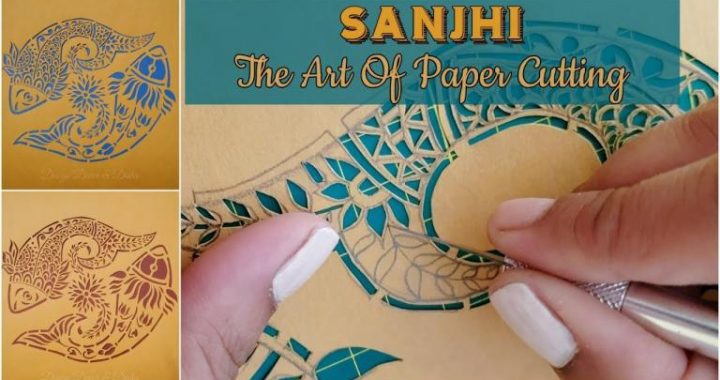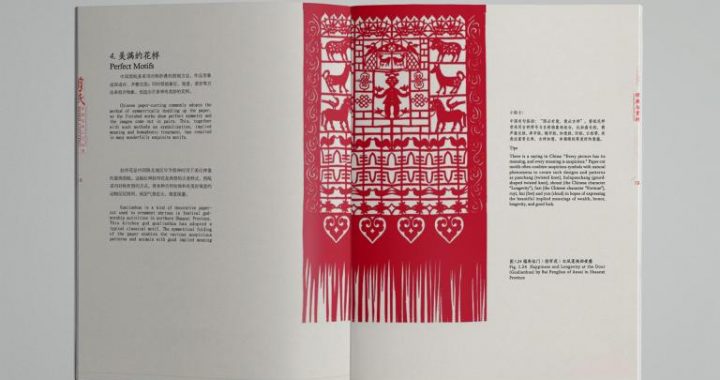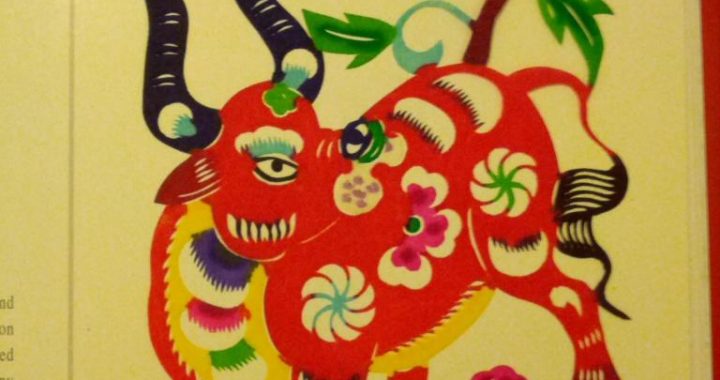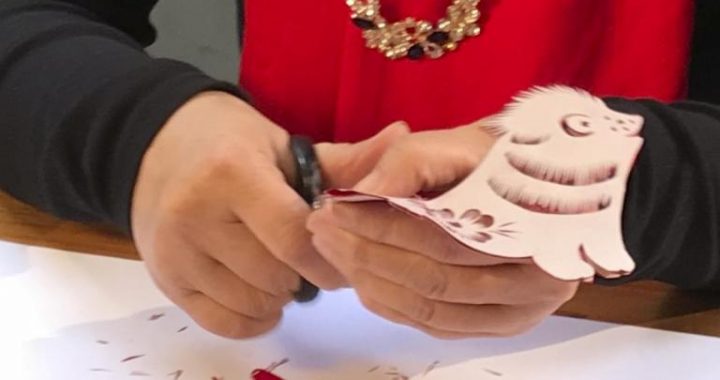Chinese Contemporary Arts and Crafts Went through a Traditional-to-Modern Transformation
19 min readPeople Daily Use Ontology, Chinese traditional crafts have always developed in everyday use of life on an impartial basis and imperceptibly influenced Chinese aesthetic tendency. Particularly, the thoughts of being gentle and refined in manner of Confucian school and the craftsmanship is extremely developed and almost reach the tao of taoist school had deeply influenced the development direction of Chinese ancient craft since pre-Qin period. The ‘ exquisite but useless skills and products’ is related to ‘ excessive attention to plaything leads to lose of lofty aspiration thus the main stream of ancient creation by craftsmanship did not pursue the extreme development of skills. Chinese beautiful crafts are either inlayed gold andengraved and painted colorful or as natural and loveable as the lotus just out of water and have flowed from one era to another era and one nationality to another nationality. However, since Song Dynasty, scholars’ tastes had an increasing impact on that, and the implied and elegant style had become the aesthetic main stream of crafts
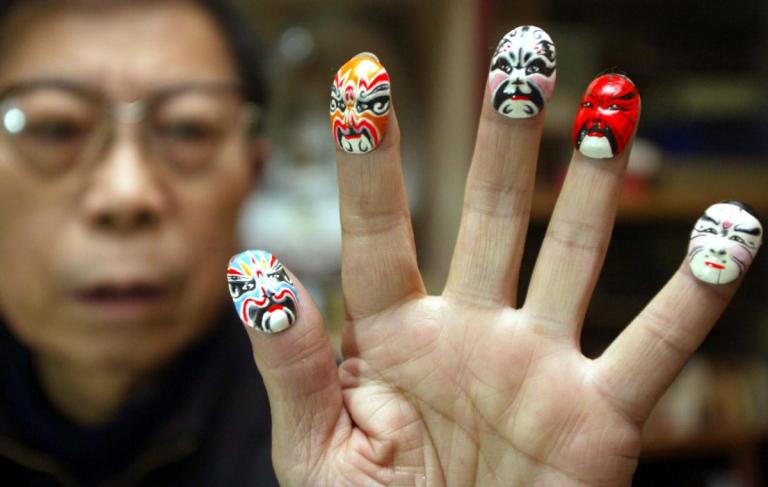
In general,Chinese crafts can be divided into two types for everyday use and fo is,all articles of everyday use can be used for appreciation,while most articles for at appreciation.However,the two types are not entirely different from each other,tha appreciation can be used in daily life.Articles of everyday use are the main body which actually exist in clothing food shelter and transportation articles for appreciation and display are often made of/from more honorable materials throughmore particular techniques and processes for the composition of crafts it can be divided into two parts:modeling and decoration,of which modeling relates to function and decoration emphasizes appreciation.Due to very stable physiological structure and essential requirements of human being,ancient lifestyle changed slowly but aesthetic standards not only changed from generation to generation but also varied from each other very much as a result the modeling had developed more stably,while decoration had changed actively
In comparison with craft,art has developed earlier and more gloriously.But,the individuality exceeded generality during the development of pure art,which can also recreate by itself and indulge in self-admiration.The production of crafts was a dance that someone danced with shackles the modeling and decoration were both limited by materials and techniques. Craft creations were divided into five categories including clothing, food shelter transportation and use according to the function; and divided into six categories including fabric, ceramic, jade, metal, lacquered wood and glass of bamboo, wood, ivory and horn according to the material. The production of crafts was divided into by local authorities and by the folk. Production by local authorities emphasized laws and grades and did not allow craftsmen to create freely; while folk products were mainly sold in the market and had to cater customers’ tastes. What’s more, in terms of setup and influence, local authorities played a leading role in production and made their products as model of folk products by right of advantages of manpower, material and financial resources at that time With applicable as the principle ancient craftsmen were good at utilizing good climatic condition and sound earth atmosphere, adjusted measures according to local conditions, used techniques according to the materials and integrated their own styles and therefore, their crafts were completed by superior materials and fine workmanship. Chinese ancient lifestyle was mainly agriculture settlement, and creations were completed in stable model based on this and applicable to display and storage; in places where nomadic people lived or after they conquered the Centra Plains, most of creations were portable. For example, Gilded Silver Flask with Dancing Horses Holding Cups in Their Mouths of Tang Dynasty was made in the shape ofleather bag of northern nomadic people with oblate body the ring foot on the bottom and the silver chain connected with arched handle on the top so that it’s not only easy to carry when riding and hunting outside, but also applicable to daily life The shape and structure of flask like Leather Bag of liao dynasty is another example just reflecting the transition of Qidan(an ancient nationality in China) from nomadism to semi-settlement. This Flask had a flat and nearly round body and the ring foot onthe bottom, was tied with band on its top to form the bridge, etc, which all made it applicable to display and storage
In Chinese ancient times people sat on the ground at first and then sat with feet dropped. Correspondingly, the raising-of-truss method for building changed from low decoration position of implements also changed with people’s sight. For example to high; furniture changed from the low and short type to the tall type; and even th ancient ancestors sat on the ground; colored pottery could be identified clearly in people’s sight and mainly colored inside or on upper part outside Until Sui and Tang dynasties, it’s popular for people to sit with feet dropped; ceramic wares were mainly placed on tea table at the line parallel to people’s sight, and their model and decoration were better and more comprehensive. ancient talented craftsmen had made many exquisite works, e.g. Colored Pottery Bottle with Sharp Bottom used to draw water in primitive society; Gangdeng(an ancient light) without lampblack and used for lighting and display and the duozi lacquer toilet Case that used space effectively in Han Dynasty the Hollowed-out Sachet that was made in crafty structure, could be used to incense and warm hand up and would not let incense out in tang Dynasty; elegant and exquisite Ming-style furniture of hardwood in simple structure, etc. These all integrates application and beauty and are representatives made by superior materials and fine workmanship
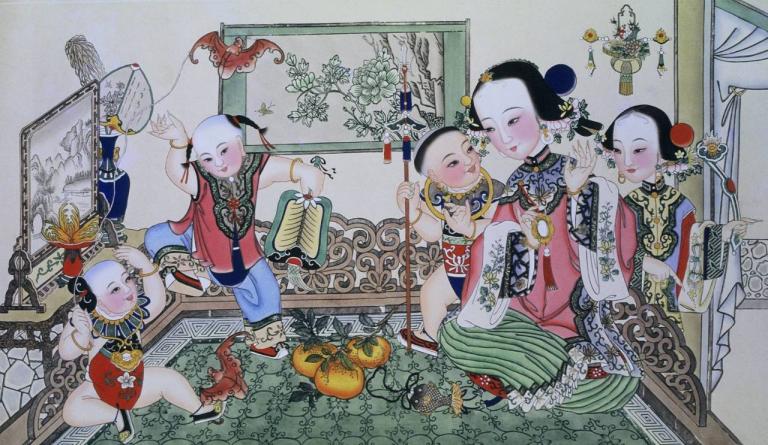
With the change of social formation, production mode and lifestyle, Chinese contemporary crafts developed toward life of the public, transferred to mechanical production, went through a traditional-to-modern transformation, and formed concise and practical contemporary aesthetic taste
After the Opium War, Western powers forced open the door of China with their warships and cannons, followed by the large influx of foreign commodities and capital,which struck a fatal blow to China’s feudal self-sufficient natural economy. Foreign commodity dumping and raw materials plundering led to the decline and bankruptcy of China ‘s traditional handicraft industry as well as the unemployment of handicraftsmen. During The Taiping Heavenly Kingdom Movement(1851-1864).however, Chinese traditional handicraft industry saw a recovery and growth, especially in dyeing weaving, metalworking, carving, New Year painting. The Taiping Heavenly Kingdom respected craftsmen, implemented organized production, advocated for “studying and taking full advantage of useful things”(New Work for Aid in Government) to “benefit people, and adopted policies to encourage craftsmanship Innovation
With the introduction of Western material culture, mechanical production and processing techniques, China also underwent a change in the mode of craftsproduction First the industries with products of the same kinds as foreign commodities were the most vulnerable to foreign commodities. Second stimulated byexport trade, the mode of production for crafts dependent on international market and foreign capital were improved. Third, under the effect of foreign capital, some traditional handicraft industries which had enjoyed a long history advanced production techniques, and great room for further development survived, even grew to a certain extent because it was impossible for machine-made products to replace them completely, in spite of certain initial shock on them. As time went by, a smal number of local workshops and plants were drawn into the capitalism market, and gradually transformed into machine factories. Fourth, certain arts and crafts industries which had traditional techniques and national features and no foreign rivals, such as ceramic, cloisonne, jade article, lacquerware, embroidery Ko-ssu, snuff bottle flourished due to the demand for export, the artistic exchange between China and foreign countries, and the advent of new education
Silver Sachet with Patterns of Grapes, Flowers Birds of the Tang Dynasty, 4.5cm in diameter, kept in Shaanxi Provincial Museum. This piece has exquisitely cut-out patterns and good ventilation for fragrance permeation, and a hook chain for wearing and hanging. Its interior has two concentric rings with an incense receptacle mounted on the inner ring with a bearing, which is a well-conceived design that keeps the receptacle balanced no matter how the censing ball rotates n addition there was also some change in the way of inheriting traditional craftsmanship from master to apprentice from father to son or from mother to daughter. The arts and crafts education in modern times had expanded the heritance scope of skills of arts and crafts, strengthened the relation between the arts and crafts education and the industrial production and diversified the identifications of employees in arts and crafts industry. After the Opium War, the arts and crafts education of late Qing Dynasty was divided into two stages with Guimaoschool system issued and implemented in 1904 as the boundary. Before the issuanceof Guimao school system, traditional way of inheritance from master to apprentice was gradually replaced by craft education at schools, which mainly included the craft teaching place of church, folk workingwomen learning place and the craft school of westernized school
There were two types of church-based craft teaching places in late Qing dynasty One was established for export trade and the other for so-called philanthropic purpose. In the middle of 19 century, due to the development of socialized mass production, western traditional handicraft industry was pushed aside and the labor-intensive handicraft production appeared to be changed to colony and semi-colony In such case, foreign businessman and missionary from other countries founded craft teaching places together in China, introduced some handicrafts required by western society into their countries such as drawnwork, lacework and woolen embroidery employed cheap Chinese labors for production, and exported such products through foreign firms
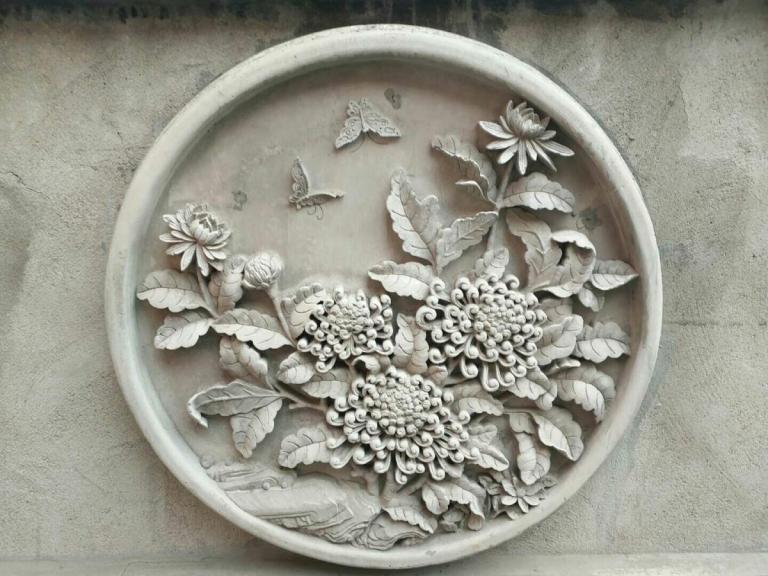
Peizhen Female School, operated by James Mamullan and his wife, the British missionaries in the late 19 century and early 20century, was a typical one of the first type. They taught skills through “Peizhen Female School”and work-stud programs, and set up Rende foreign Firm to develop and process materials and resell products to Europe, directly promoting the rise of drawnwork industry of Yantai, Shandong. The representative of the second type was Shanghai Handicraft Workshops in Tushanwan Orphanage, which had consistently kept a larger scale anddeveloped many talents of art and craft design such as Zhou Xiang, Zhang yuguang and Xu Yongqing during the long-term development from 1864 to 1953. The Handicraft Workshops undertakes production and develops by itself; its products are mainly used for sales, and monitory for its own use In the late 19century, to enrich the country and build up its military power and save the nation by engaging in industry, the Qing government supported the Self Strengthening Movement to established factories, develop military industry and civil industry, and found new schools under the guideline of “Chinese learning is the foundation, while Western learning is for practical use. Wherein, new schools mainly included foreign language school, military school and professional skills school; the latter two schools usually depended on arts and crafts education. Zuo Zongtang and Zhang Zhidong had made great contributions to arts and crafts education. Zhang Zhidong attached importance to arts and crafts education in theory, and also practically founded a batch of the earliest arts and crafts schools. For example, he established Jiangnan Chucai School in Nanjing in 1897, which consisted of exchange department, agricultural policy department, arts and crafts department and commercial department; and Hubei Technical Institute in 1898, which employed Chinese and foreign craftsmen first to teach machine, manufacture, drawing, carpentry, cooper work, lacquerware, bamboo ware, glass, textile, architecture, etc and focused on combination of theory and practice and emphasized practical operation
During the last ten years of the late Qing Dynasty, considerable progress was registered in arts and crafts education. After the New Deal in late Qing dynasty in 1901, the government led to accelerate the modernization of arts and crafts education pattern, resulting in the appearance of a lot of technical bureau, office, teaching place, learning place, upbringing bureau, etc, which were both schools and plants. In 1904, the Qing government issued and implemented Zouding School Rule(Guimao school system) which laid a foundation for modern Chinese educational systems and requlated the arts and crafts education patterns of various schools at all levels in the form of national education system: developing the ceramic, dyeing and weaving, lacquering carpentry metalworking and other professional education types horizontally, and developing the high, middle, lower, faculty training and other layersvertically. In 1906, Li Ruiqing, a painter in late Qing Dynasty, set up a discipline of picture handicraft in Nanjing Liangjiang Normal School, which was a representative of early faculty training
In terms of geographical distribution, industrial breakdown, proportion of output, and number of employees, the modes of production of arts and crafts, even handicrafts, were diverse and co-exited during the late Qing Dynasty and the former Republic of china. First, the geographical distribution and industrial breakdown were unbalanced Machine industrial enterprises almost centralized in cities offshore and along rivers, while there was mainly the more traditional handicraft industry in inland and rural regions the arts and crafts industries for daily commodities used machines or handicraft plants on a large scale for production more, such as cotton textile, silk weaving and ceramics. The products were mainly used for arts and crafts industry ofdisplay and appreciation, e. g jade articles, ivory carving products, cloisonne and carved lacquerware might be transferred to common commodity or exported throughpurchase of foreign firms. The production patterns were mainly small handicraft plants and even traditional workshops second handicraft industry accounted for a large proportion of output value of manufacturing and a lager proportion of production of means of livelihood Third there were a lot of employees In 1920s there were more than 10 million handicraft workers and 12 million people undertaking handicraft production in rural areas, while there were only around 2 million industrial Workers nationwide
In the late 19 century and early 20century, the machine industry further progressed, providing new handicraft machines for the traditional handicraft industry Consequently, handicraft workshops as a whole achieved growth by adopting new technology and improving management. And then some modern handicraft industries using machinery to produce emerged, especially the dyeing and weaving industry andceramic industry In terms of cotton textile industry, Shanghai established Machine Weaving Bureau in 1889, initiating the machine weaving. Subsequently, Jiangyin, Wuchang, Hangzhou, etc. successively followed this. 1890-1921 became an important period during which Chinese cotton textile industry had developed steadily. In terms of silk weaving industry, Jinyun, Meiya, Weicheng, Zhenya, Lihua and other large-scale silk mills were established in Shanghai, Hangzhou, Suzhou, Huzhou, etc. successivelybefore and after 1912, forming a prosperous production situation In terms of ceramic industry, in the late Qing dynasty and early Republic of China, a number of large-scale porcelain production and distributing enterprises were established in all porcelainareas, of which there were more such enterprises in Jingdezhen, Jiangxi and Liling, Hunan, such as Jiangxi Porcelain Company, Jingdezhen porcelain Company, Hunan Porcelain Company and Liling Porcelain Company
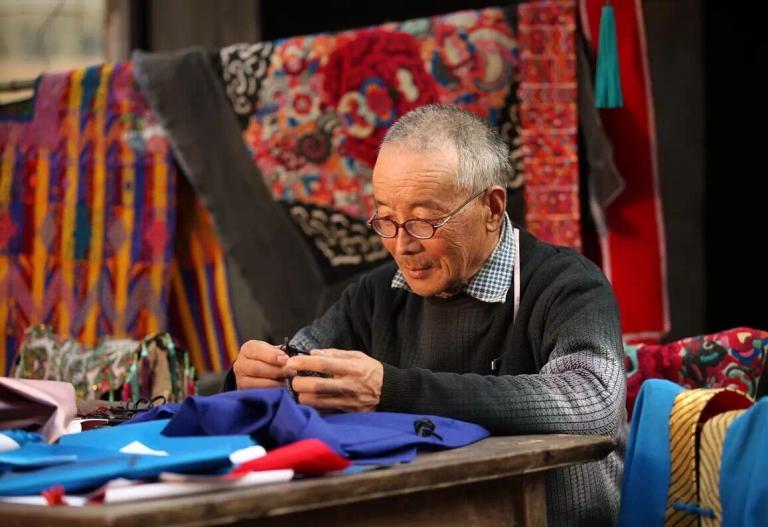
After the establishment of the Republic of China in 1912,imperial-run workshops were wound up,with their skilled craftsmen unemployed and dispersed across the country.Then,they established private workshops and stores,dealing in products mainly used for furnishing and appreciation,as folk craftsmen did.The arts and crafts industries for daily commodities used machines or larger-scale handicraft plants for production more,such as cotton textile,silk weaving and ceramic industries.Especially during the first World War when Western powers could not spare any time to intrude Eastern countries,these industries developed under the driving force of Chinese national capital,and new dyeing and weaving factories were established and spindles were increased as rapidly as bamboo shoots after a spring rain ith the development of modern business,traditional New Year painting advertising and packaging,etc.underwent changes under the influence of Western nodern design Calendar advertisement was a typical example.due to the need offoreign firms advertisements,such calendar advertisement appeared in Shanghai late Qing Dynasty,combined traditional New Year pictures with Chinese and Western calendars and modern advertisements,and was very popular in 1920s-1930s
The governments of the late Qing Dynasty and the Republic of China both had adopted economic policies for promoting industrial development and encouraging Chinese and foreign exchange, and implemented a series of specific and effective measures: Establishing commercial department, chamber of commerce, craft bureaucraft school and other functional organizations and educational institutions to strengthen the production management and education and inheritance; holding national or local trade fair and exhibition fair and encouraging to participate in the World Expo at abroad to establish platforms for display and exchange of Chinese and foreign industry, handicraft industry and arts and crafts. In 1909, the Qing government ordered local governments to establish their chambers of commerce, to enable new businessmen to get rid of the decentralized and close tradition industrial association and form a multi-industry commercial association as of 1912 there were 2000 chambers of commerce nationwide and more than 200,000 members chambers of commerce at all levels became organizers and undertakers of various domestic exhibition fairs when actively developing business education for the purpose of their own industrial and commercial benefits
Since the World Expo was held in London, Britain in 1851, China has participated in the World Expo and other large-scale fairs in private or official name, and experienced a cognitive process from”showing off peculiar articles, “”comparing treasures”to exchange, “establishing friendship with other countries, “commercial war”and commerce and trade. In 1873, China officially started to participate in World Expo in the name of “government, but commissioned robert hart, a british who worked as Inspector-General of Chinese Maritime Customs Service, to establish a special agency to deal with this international affair at the customs and chinese did not dominate theorganization of participation in World Expo until the World Expo was held in St Louis, the u.S. in 1904
The participation in the World Expo had a significant impact on the exchange between foreign and domestic arts and crafts industries the acquisition ot ternational business opportunities and the enhancement of commerce and trade Many strengths of traditional arts and crafts e.g.embroidery cloisonne,jade article carved lacquerware,carpet,ivory carving,snuff bottle and palace lantern have been sold at abroad,become main exhibitions for China to participate in World Expo,and sold very well as award-wining articles.The earliest group of diplomatists of late Qing Dynasty including Guo Songtao,Li Shuchang,Ma Jianzhong,Zhang Yinhuan and Chen Jitong have become the first chinese to see the world and find world expo both withfunctions of”establishing friendship with other countries”and”bringing commercial terests.As of early Republic of China,there was more standardized procedure forChina to organize the participation in World Expo;the government participated in Panama Pacific International Expo held in San Francisco,the U.S.with a positive,aspirant and new attitude in 1915.After careful selection,among more than 100,000 exhibitions from 18 provinces of China,Chinese finally won 1211 awards and became the top one among all countries.Wherein,viewers grasped with admiration at the carpet from Beijing,Suzhou embroidery from Jiangsu,Luofang(a kind of textile)and woodcarving from Zhejiang,ebony furniture,whitework embroidery and gold and silver decorations from Guangdong,etc
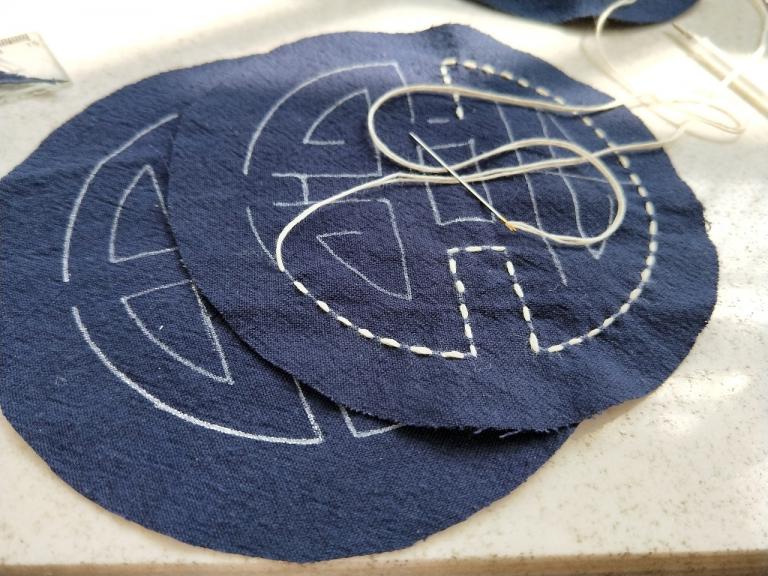
In the late Qing dynasty and early republic of china domestic exhibition fairs were often named as Quangong Fair,Quanye Fair,Trade Fair,Overview Fair,Exhibition Fair,or Exposition,etc At Nanjing Nanyang Commodity Exposition in 1910,the only national exposition held in late Qing Dynasty,people had a preliminary understanding of the distribution of categories of Chinese products and completed a relatively systematic and reliable statistics.Among the more than 100,000 exhibitions,there were a majority of agricultural and sideline products and handicraft works some mechanical and industrial products and the specially established machinery and crafts exhibition halls,showing a thorough review on China’s industrial development level in the early 20th century
The West Lake Exposition was held in 1929 in order to promote China-made goods encourage and reward industries and revitalize culture,and it produced nationwide and even international influence,although it was only a local trade fair sponsored by ocal government.At the West Lake Exposition,there were 147,600 exhibitions collected throughout the country,and eight halls,two offices and three specia exhibition places.Wherein,halls related to arts and crafts were Art Hall,Silk Hall,Industrial Hall and Sports Hall.Under the leadership of Liu Jipiao,the teachers and students from Pattern Department of hangzhou national college of art designed the architectural ornament and interior furnishings of these halls Zheng yuebo a student from Pattern Department designed the emblem of the west lake exposition However, good times did not last long. After the outbreak of Anti-Japanese War, the market was depressed the masses lived in dire poverty and traditional handicraft industry was plagued by domestic strife and foreign aggression. But, in liberated areas to deal with enemies’ attack and economic blockade, the central committee of the Communist Party of China proposed to conduct the great Production Campaign of we should support ourselves by our won labor, making traditional handicraft industry develop further with the emergence of the dyeing and weaving, ceramics, glass, carpentry, knitting, decoration, embroidery and other crafts related to local military, politics, economy and life
Based on the school-dominated arts and crafts education system in the late qing Dynasty the arts and crafts education of the republic of china had formed a multi layer and multi-type systematic education pattern There were high, middle and lower layers, and professional education, vocational education, pedagogical education, etc mainly including pattern education of fine art college handicraft education of normal colleges and schools and the arts and crafts education of industry school and vocational school. Therefore, the arts and crafts education of the republic of china had established the discipline status of arts and crafts education, having a profound impact on the arts and crafts education and art design education of the new china
Fine art colleges were composed of national, provincial and private ones. Due to relatively broad definition of pattern concepts in educational circles, for the names of disciplines or academic departments, there were applied art, “practical artor commercial art. “As for school mission, National Beiping Art School (whose former was Beijing art School established in 1918) and Hangzhou National College of art(whose former was National academy of art established in 1928) both advocated art education especially social art education related to national economy and the people’s livelihood, instead of such art education as ivory tower; and established their own pattern department

During the period of the republic of China, vocational education developed rapidly thanks to the efforts of Huang Yanpei. there were two main social reasons: first Western powers were busy with the First World War and could not spare any time for intruding China, and therefore Chinese national industry and commerce developed rapidly; second, a number of graduates from middle and primary school could not find jobs due to a lack of specialty. Therefore, the structural contradictions between this educational drawback and market demand directly promoted the development of vocational education because handicraft education and arts and crafts education were closely related to industry and occupation, they highly drew attention of industry school and vocational school and became the emerging force for development of traditional handicraft industry. For example, Du Jinsheng, a silk weaving expert graduated from Zhejiang Provincial college for Industry A, founded Hangzhou du Jinsheng Silk Factory”in 1922. Only eight or nine years later, it became popular among the public by virtue of colorful silk products with beautiful scenery of the West Lake and Chinese ancient painting, and its products were sold throughout the country and to southeast Asia europe and america and have been awarded the gold prize of philadelphia International Exposition in 1926
During the period of the republic of china, driven by the trend of thought of save the nation by engaging in industry”and the”National Goods Movement, national capitalism industry and commerce flourished in shanghai and other citiesand commercial art started to play an increasingly important role in industry and commerce. The consumption demand of the mass society increased the demand for arts and crafts design talents and promoted the prosperity of commercial art Meanwhile, Chinese artists, who were influenced by Western art or had studied at abroad, consciously turned to practical art and commercial art, or established commercial art studios and design offices or devoted themselves to the tide of saving the nation by engaging in industry and National Goods Movement as freelancers The artists engaged in commercial art might either become talented through self study locally or return to china after learning artistic skills abroad despite of different processes of learning skills and artistic accomplishment the two kinds of artists were often both required to confront the reality and do business with comprehensive economic, technical, cultural, artistic and politic factors when entering commercial art market. The commercial artists, who became talented through self-study, were divided nto two kinds: First, artists made a living mainly on commercial art, of which the most representative was calendar-painter in a large number for example zhou muqiao Zheng Mantuo, Xu Yongqing, Xie Zhiguang, Hang Zhiying, Jin Xuechen, Li Mubai, Jin Meisheng all had learnt skills from masters or learnt skills while working. althoughthey had not studied abroad, they actively participated in commercial art design and created calendar pictures in various styles, having broad influence on the society Some famous calendar-painters might independently establish studios or jointly form offices. The “Zhiying Studio”established by hang Zhiying was a typical example which undertook a broad range of businesses mainly including advertisement packaging and calendars, completed work under the cooperation of master and apprentice, and had been operated by parties until the people’s republic of china was established Secondartists had dabbled in commercial art but not made a living on this for a long time, and did not studied at abroad, such as Zhang Guangyu, Ye Qianyu, Jiang Zhaohe, Li Keran who all had undertaken commercial art design in their early years The second kind of commercial art operators were artists who returned to China after studying abroad. They tried to established individual or minor design offices with different names such as Art supply Agency, Arts and Crafts Agency, Pattern Hall and
Crafts Agency, and mostly operated such offices with decorative design as core business. Such group of artists undertook commercial art in diversified forms for a shorter time. Most of them undertook advertisement design, book design and dyeing and weaving pictures design, while minority of them dabbled in product design, interior design and mural painting. For example, Chen Zhifo, the first Chinese to study crafts and arts in Japan, summarized theory of modern crafts and arts after homecoming, established “Shangmei Design Studio”(1923-1927), and tried to promote the development of dyeing and weaving industry in Shanghai and hangzhou through modern dyeing and weaving picture design. However, due to a lack of driving force and soil of originality, Chen Zhifo could barely maintain professional original design during the four years. Another example was Pang Xungin who returned to China after studying modern art in france and then transferred to arts and crafts she created Chinese Patterns(1939) though systemizing and studying Chinese ancient, national and folk decorative patterns with modern concepts, and worked out Arts and Crafts Set (1941) through trying integrating traditional decorative patterns into modern design
An important feature of art and design during the period of the republic of china was that they were mainly applied in consumption sector rather than industrial sector, so visual art and design developed faster, such as calendar advertising, packaging design and book decoration. In the social context of domestic strife and foreignaggression and the weak design awareness in the market at that time, it was very difficult for those artists to operate private”specialized”design offices. They usually turned to school education when their business failed
